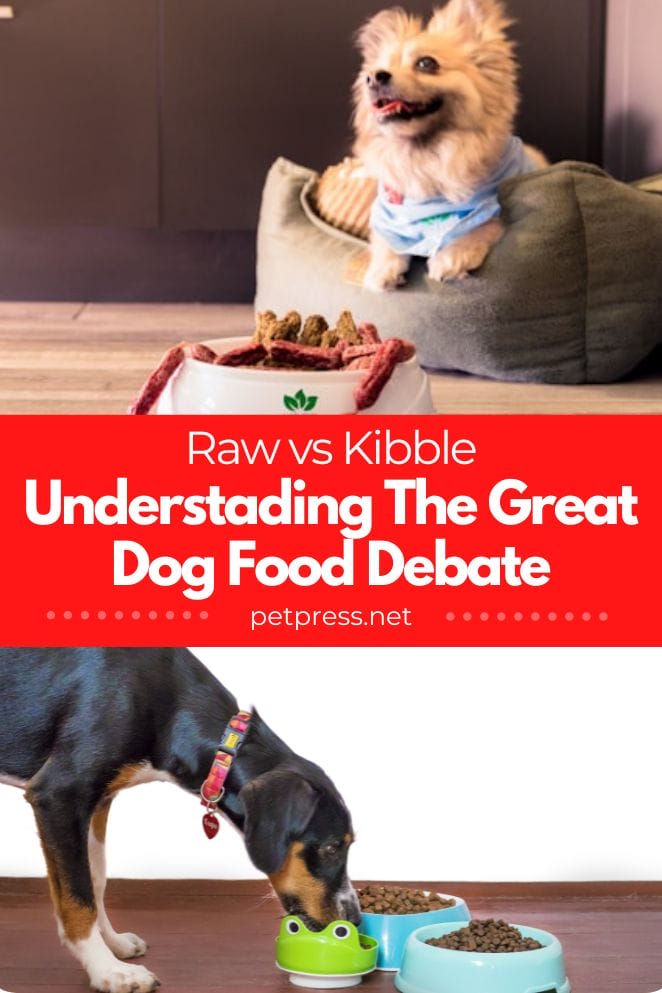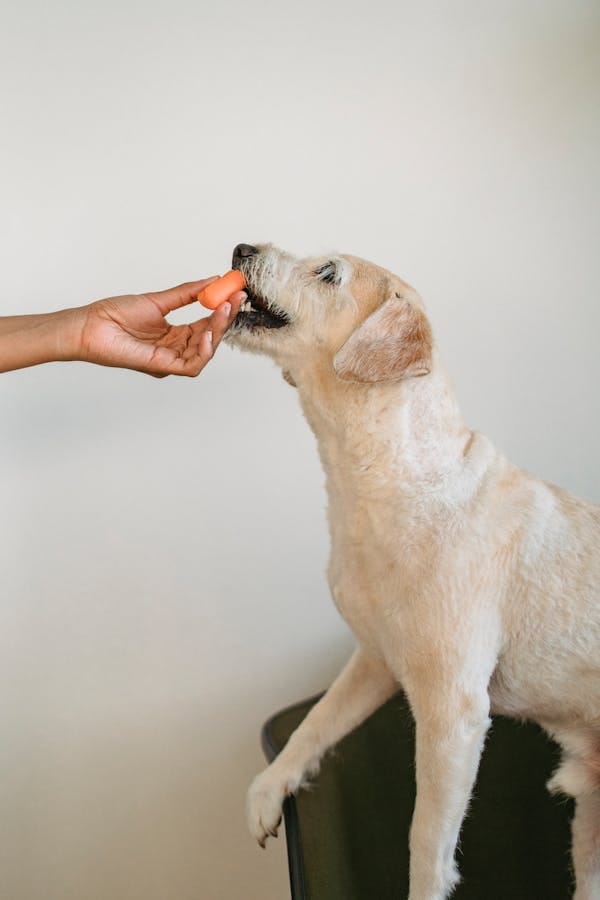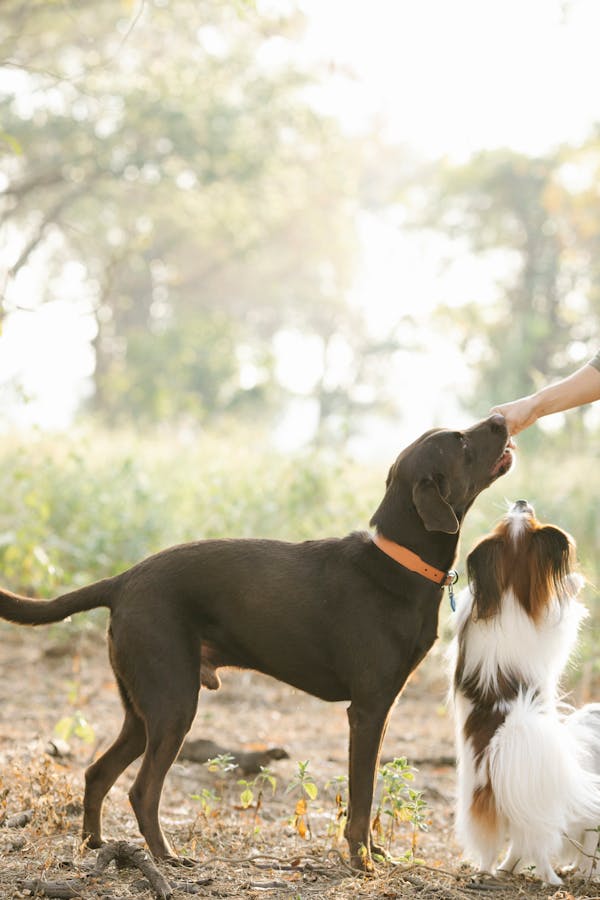
When it comes to feeding your dog, one of the biggest decisions you’ll make is choosing the right diet.
Dog owners today are often split between two primary options: raw food or kibble.
Each side has its passionate supporters, claiming that their choice is better for the health, longevity, and happiness of their canine companions.
If you’re new to this debate or looking for guidance on what’s best for your dog, we’ve got you covered.
Understanding Dog Food Types
Before making any decisions, it’s crucial to understand what each type of food offers.
Let’s explore kibble and raw food individually.
What is kibble?
Kibble is the most common type of dog food and has been around for decades.
These small, dry pellets are made from a mix of meat, grains, vegetables, and added vitamins and minerals.
Kibble is known for its convenience and long shelf life, making it a popular choice for many dog owners.
Key characteristics
- Convenient: Kibble is easy to store and portion out.
- Affordable: It is generally more budget-friendly compared to other types of dog food.
- Balanced nutrition: Many kibble brands are formulated to meet the nutritional needs of dogs, following the guidelines set by the Association of American Feed Control Officials (AAFCO).
However, despite its convenience, some critics argue that kibble can be over-processed and may not provide the same level of nutrition as whole, raw foods.
What is raw food?
Raw food diets, also known as BARF (Biologically Appropriate Raw Food), consist of uncooked meats, bones, fruits, and vegetables.
Proponents argue that a raw diet is more natural for dogs since their ancestors, wild wolves, primarily consumed raw prey.
Key characteristics
- Natural ingredients: Raw food is made up of fresh, whole ingredients that are closer to what dogs would eat in the wild.
- Customizable: Owners can tailor the diet to their dog’s specific needs by choosing different meats, vegetables, and supplements.
- Potentially higher quality nutrition: Raw food advocates believe that this diet offers better nutrient absorption due to the lack of processing.
However, feeding raw food requires more effort, planning, and time.
It can also be more expensive and comes with certain risks, especially regarding food safety.

Nutritional Comparisons
When comparing the nutritional value of kibble and raw diets for dogs, there are a few key areas to consider:
| Nutritional Aspect | Kibble | Raw Diet |
| Protein Content | Contains protein, but often from processed sources. Generally lower protein quality compared to raw diets. |
Typically higher in protein from fresh meat, which is easier for dogs to digest and provides better quality nutrients.
|
| Carbohydrates | Often high in carbohydrates from grains, which act as fillers and provide energy. Too many carbs can lead to obesity and health issues. |
Lower in carbohydrates, with a focus on meats and vegetables. Closer to a dog’s natural diet.
|
| Fats | Provides fats, but they may come from processed sources. |
Offers healthier fats from fresh meats, which are beneficial for coat and skin health.
|
| Vitamins and Minerals | Fortified with essential vitamins and minerals to ensure a balanced diet. |
May require supplements to meet all nutritional needs, especially if the diet lacks variety.
|
Safety Considerations
When it comes to feeding your dog, safety is an important factor to think about, whether you’re choosing kibble or a raw diet.
Both options come with their own set of risks and benefits:
Kibble safety
Kibble is generally considered the safer option because it is cooked and processed, which kills harmful bacteria.
This makes it less likely to cause foodborne illnesses for your dog.
However, kibble isn’t completely risk-free.
There have been instances where kibble has been recalled due to contamination from things like mold or bacteria.
While these cases are rare, it’s important to stay updated on any recalls and always check the packaging for freshness.
Raw food safety
Raw diets, on the other hand, carry a higher risk of contamination, especially from bacteria like Salmonella and E. coli.
These bacteria can be harmful not just to your dog but also to you and anyone in your household who handles the food.
According to the Centers for Disease Control and Prevention (CDC), raw pet food can spread dangerous pathogens if not handled properly.
This means you need to be extra careful when preparing and serving raw food—washing your hands thoroughly, cleaning surfaces, and making sure the meat comes from trustworthy suppliers.

Owner Experiences and Expert Opinions
Dog owner experiences
Dog owners who choose a raw diet often notice positive changes in their pets, such as shinier coats, higher energy levels, and better digestion.
They believe the fresh, natural ingredients make a difference in their dog’s overall health.
On the other hand, owners who feed their dogs kibble appreciate the convenience and ease of use.
They find that kibble provides a balanced diet without any noticeable health problems in their pets.
Veterinarians
Most veterinarians tend to recommend kibble because it’s specifically formulated to meet a dog’s nutritional needs.
It’s also considered safer, as the processing kills harmful bacteria, reducing the risk of contamination.
Raw food advocates
Holistic vets and pet nutritionists who support raw diets argue that a less processed, more natural diet can be especially beneficial for dogs with allergies or digestive problems.
They believe that raw food can help improve a dog’s overall health by offering a closer match to what dogs would naturally eat.
Choosing the Best Diet for Your Dog
There’s no single answer when it comes to choosing between a raw or kibble diet.
The best option depends on your dog’s unique needs, lifestyle, and overall health.
Age and breed
Different life stages and breeds can have specific dietary requirements.
Puppies and senior dogs, for example, may need special nutrients to support their growth or aging bodies.
Larger breeds might benefit from diets that include ingredients like glucosamine, which helps with joint health.
Health conditions
If your dog has allergies or digestive issues, a raw diet might help since it’s less processed and can be tailored to their needs.
However, dogs with conditions like kidney problems may do better with the carefully balanced formulation of kibble, which provides precise nutrition.
Owner lifestyle
Your own lifestyle also plays a big role.
If you have a hectic schedule, kibble is often the easier and more convenient option.
On the other hand, if you enjoy cooking and have the time and resources, preparing a raw diet can be a rewarding way to feed your dog.

Final Thoughts
Both kibble and raw diets have their advantages and drawbacks.
Kibble is easy to use, budget-friendly, and nutritionally balanced, but it can be highly processed.
On the other hand, raw diets are more natural and can be tailored to your dog’s specific needs, but they require more preparation time and carry potential safety concerns.
The best choice depends on what suits your dog’s health and your ability to provide a safe and balanced diet.
FAQs
It depends on your dog’s specific needs. Some dogs thrive on raw diets, while others may not. Consult with your vet before making a change.
Raw food can carry bacteria that may harm both dogs and humans. Handle raw food carefully and follow food safety guidelines.
Yes, some owners opt for a mixed diet. However, consult your vet to ensure your dog is receiving balanced nutrition.
Kibble is formulated to provide balanced nutrition. However, low-quality brands may contain fillers or preservatives that aren’t as healthy.
Look for brands that meet AAFCO standards, use quality ingredients, and have a good reputation.
- Can You Have a Meerkat as a Pet? Everything You Need to Know - November 25, 2025
- Emerald Tree Skink: Your Complete Guide to This Stunning Lizard - November 24, 2025
- How Much Are Ragdoll Cats? A Complete Guide - November 21, 2025


GIPHY App Key not set. Please check settings